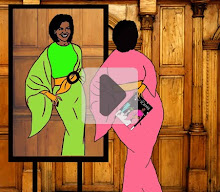
As I write there are two Scuttling Cockroach Lonely Hearts Club Armies™ making their way towards our borders, and 5200 additional armed troops on the way to defend the border. What could go wrong? And who started this insurrection? Hint: It wasn’t President Donald J. Trump.
Angelo Codevilla provides an in depth understanding of the nature and trajectory of today’s deep riff in the American fabric that he first tagged as a "cold civil war." It seems he’s upgraded it now to a “revolution.”
The American republic’s essence had been self-restraint toward fellow citizens deemed equals. The Constitution of 1787 had been its paradigm. Under its words and by its laws, Americans had enjoyed safety and predictability for themselves and their way of life. But Progressives’ subordination of the Constitution, laws, and institutions to their own purposes and for their own primacy ended all that. The rest of America’s increasing realization that only fire can fight fire has followed naturally.
This is our revolution: Because a majority of Americans now no longer share basic sympathies and trust, because they no longer regard each other as worthy of equal consideration, the public and private practices that once had made our Republic are now beyond reasonable hope of restoration. Strife can only mount until some new equilibrium among us arises.
I can’t say that it is an uplifting piece, but if you are a red pill sort, it is certainly the clearest and most in-depth analysis to date on how we got here. For example, Codevilla explains that despite the fact that three-fourths of Americans opposed the trillion dollar bailout of big banks during the 2007-8 financial crisis, our “betters” overruled the will of the people:
Previously, Americans dissatisfied with their Progressive rulers had imagined that voting for Republicans might counter them. But then, as three-fourths of Americans opposed bailing out big banks with nearly a trillion dollars, the Republican and Democratic presidential candidates joined; most Republican legislators joined all Democrats; The Wall Street Journal joined The New York Times, and National Review joined The Nation; in telling Americans that doing this was essential, and that their disapproval counted for nothing. And then, just as high-handedly, all these bipartisan rulers dropped that bailout scheme, and adopted another—just as unaccountably. They showed “government by the people, for the people” to be a fable.
This forced the recognition that there exists a remarkably uniform, bipartisan, Progressive ruling class; that it includes, most of the bureaucracies of federal and state governments, the judiciary, the educational establishment, the media, as well as major corporate officials; that it had separated itself socially, morally, and politically from the rest of society, whose commanding heights it monopolized; above all that it has contempt for the rest of America, and that ordinary Americans have no means of persuading this class of anything, because they don’t count.
As the majority of Americans have become conscious of the differences between this class and themselves they have sought ever more passionately to shake it off. That is the ground of our revolution.
This “class” is what we refer un-affectionately to as “deep state.”
In our time, the most widespread of differences between rulers and ruled is also the deepest: The ruled go to church and synagogue. The rulers are militantly irreligious and contemptuous of those who are not. Progressives since Herbert Croly’s and Woodrow Wilson’s generation have nursed a superiority complex. They distrust elections because they think that power should be in expert hands—their own. They believe that the U.S Constitution gave too much freedom to ordinary Americans and not enough power to themselves, and that America’s history is one of wrongs. The books they read pretend to argue scientifically that the rest of Americans are racist, sexist, maybe fascists, but above all stupid. For them, Americans are harmful to themselves and to the world, and have no right to self-rule. That is why our revolution started from a point more advanced in its logic than many others.
He explains quite succinctly why Donald Trump won first the primary and then the election:
Donald Trump was out of central casting—seemingly a caricature of what the ruling class said about its opponents. But the words he spoke were less significant than that he spoke with angry contempt for the ruling class.
And he likewise explains the “resistance” that seemingly sprung organically from Deep State’s loss but has subsequently been revealed to have existed, underground, well beforehand.
The “resistance” subsequent to the election surprises, in part, because only as it has unfolded have we learned of its scope prior to the election. All too simply: the U.S government’s upper echelons merged politically with the campaign of the Democratic Party’s establishment wing, and with the media. They aimed to secure the establishment candidates’ victory and then to nullify the lost election’s results by resisting the winners’ exercise of legitimate powers, treating them as if they were illegitimate. The measure of the resistance’s proximate success or failure would come in the 2018 elections.
There is much, much more, including a lengthy discussion of the Kavanaugh circus; well worth the read. And as you read, remind yourself from time to time that this is precisely why we have the 2nd Amendment.


























